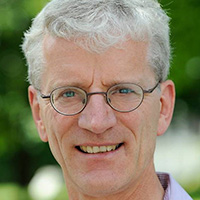 Professor Dr. -Ing Ulrich Kulozik
Chair of Food and Bioprocess Engineering, Technical University of Munich
TUM School of Life Sciences Weihenstephan
Professor Dr. -Ing Ulrich Kulozik
Chair of Food and Bioprocess Engineering, Technical University of Munich
TUM School of Life Sciences Weihenstephan
Dr. Ulrich Kulozik is the Chair of Food and Bioprocess Engineering at the Technical University of Munich in Germany. Ulrich has 3 Postdoctoral projects completed, 57 PhD projects completed and 19 active PhD projects. His past roles include a guest Lecturer for Biotechnology at the Technical University of Munich; a Dpe\artment Mgr. at Kraft Foods Europe; a Senior Lecturing Scientist at the Technical University of Munich and an Assistant Lecturer at the University of Munich. Ulrich has several degrees from the Technical University of Munich in Food Process Engineering.
Ways to Better Understand and to Mitigate Deposit Formation on Membrane Surfaces to Improve Flux and Transmission of Components
Membrane fouling has been the limiting factor and capacity bottleneck in filtration performance in general. High fluid velocities along the membrane flow path from module inlet to outlet (“crossflow conditions”) have greatly helped to reduce deposit formation, but the situation is still not satisfying. Room for improvement has been identified during recent years to better control deposit formation. Key is a better understanding of this issue, gained by newly developed methods for visualization of membrane fouling intensity and by analytically investigating composition, spatial distribution and chemistry of cohesive and adhesive forces of and in deposits. Based thereof and further to that, new insights could be gained by assessing membrane performance as a function of module length, compared to treating the module as black box with a view on flux and permeation of solutes as average per module. Transmembrane pressure varies along the flow path as a function of module length. Hence, fouling intensity also varies. Therefore, flux and transmission of solutes cannot be understood only by looking at module average data. In this context, available module types and materials (tubular, flat sheet, spiral-wound, hollow fiber; ceramic, polymeric) were compared and new ideas for alternative module concepts and processing modes for optimized membrane performance are proposed.
